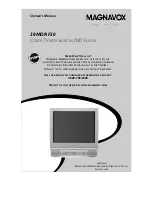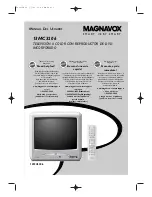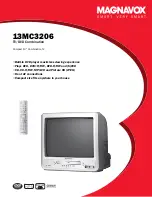
1. Some semiconductor (Òsolid stateÓ) devices
are easily damaged by static electricity. Such
components are called Electrostatically
Sensitive Devices (ESDs); examples include
integrated circuits and some field-effect
transistors. The following techniques will
reduce the occurrence of component damage
caused by static electricity.
2. Immediately before handling any semicon
ductor components or assemblies, drain the
electrostatic charge from your body by
touching a known earth ground. Alternatively,
wear a discharging wrist-strap device. (Be
sure to remove it prior to applying powerÑ
this is an electric shock precaution.)
3. After removing an ESD-equipped assembly,
place it on a conductive surface such as
aluminum foil to prevent accumulation of
electrostatic charge.
4. Do not use freon-propelled chemicals. These
can generate electrical charges that damage
ESDs.
5. Use only a grounded-tip soldering iron when
soldering or unsoldering ESDs.
6. Use only an anti-static solder removal device.
Many solder removal devices are not rated as
Òanti-staticÓ; these can accumulate sufficient
electrical charge to damage ESDs.
7. Do not remove a replacement ESD from its
protective package until you are ready to
install it. Most replacement ESDs are
packaged with leads that are electrically
shorted together by conductive foam,
aluminum foil or other conductive materials.
8. Immediately before removing the protective
material from the leads of a replacement ESD,
touch the protective material to the chassis or
circuit assembly into which the device will be
installed.
9. Minimize body motions when handling
unpackaged replacement ESDs. Motions such
as brushing clothes together, or lifting a foot
from a carpeted floor can generate enough
static electricity to damage an ESD.
Precautions
1-4
1-3 Precautions for Electrostatically Sensitive Devices (ESDs)
Summary of Contents for M-V19H01
Page 9: ...Color TV VCR Combination OWNER S MANUAL M V19H01 ...
Page 46: ...TOSHIBA AMERICA CONSUMER PRODUCTS INC ...
Page 131: ...Troubleshooting 7 7 7 8 No Playback ...
Page 134: ...Troubleshooting 7 10 7 13 Reverse Direction Search Screen Doesn t Operate ...
Page 135: ...Troubleshooting 7 11 7 14 Tape Doesn t Load ...
Page 136: ...Troubleshooting 7 12 7 15 Capstan Doesn t Rotate ...
Page 137: ...Troubleshooting 7 13 7 16 Cylinder Doesn t Rotate ...
Page 138: ...Troubleshooting 7 14 7 17 No Picture During Playback ...
Page 139: ...Troubleshooting 7 15 7 18 No Picture During Record ...
Page 140: ...Troubleshooting 7 16 7 19 No Color During Playback ...
Page 141: ...Troubleshooting 7 17 7 20 No Color During Record ...
Page 142: ...MEMO 7 18 ...
Page 163: ...Schematic Diagrams 13 1 13 Schematic Diagrams 13 1 VCR SECAM BLOCK ...
Page 164: ...Schematic Diagrams 13 2 13 2 A V BLOCK ...
Page 165: ...Schematic Diagrams 13 3 13 3 POWER BLOCK ...
Page 166: ...13 4 13 4 MAIN BLOCK ...








































